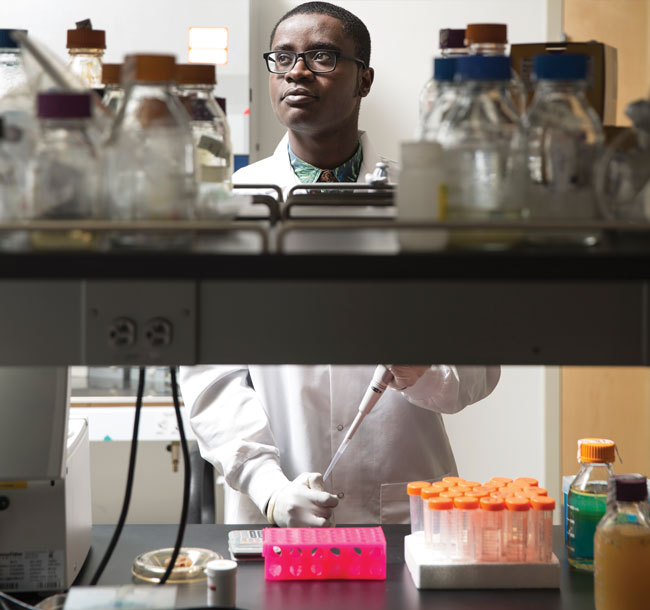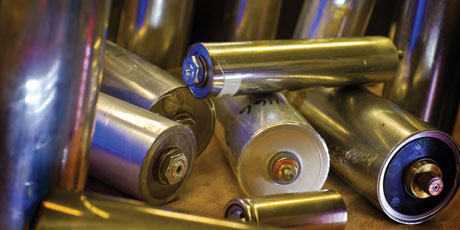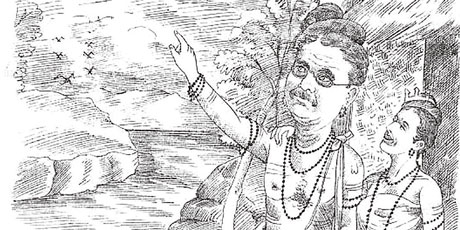difficile to beat
Battling a Deadly Bacterium
Biology major Emmanuel Fordjour examines ways to fight a dangerous infection

Emmanuel Fordjour
Each year a bacterium called Clostridium difficile causes approximately 250,000 hospitalizations and 14,000 deaths in the United States. When Emmanuel Fordjour heard those statistics as a sophomore at UTA, he asked biology Assistant Professor Julian Hurdle if he could help research ways to fight the dangerous disease.
Just two years later, Fordjour’s work with Dr. Hurdle has put him in an elite class. The double major in biology and microbiology was named a winner of the Council on Undergraduate Research’s 2014 Posters on the Hill competition and also received one of 15 United Negro College Fund Merck Science Research Fellowship Awards. The latter includes research internship opportunities with Merck and travel expenses to research conferences.
Fordjour says his research work in Hurdle’s lab has been one of the highlights of his undergraduate career: “He generously gave me this opportunity in research to grow not only as a science student but also as an individual.”
After he graduates in May, Fordjour plans to earn a combined M.D./Ph.D. so he can pursue a career as a physician, educator, and researcher.
“Someday, I hope to provide upcoming students and scientists the same opportunity Dr. Hurdle has provided me to define and further my academic career through research,” he says.
Photography by Justin Clemons

















